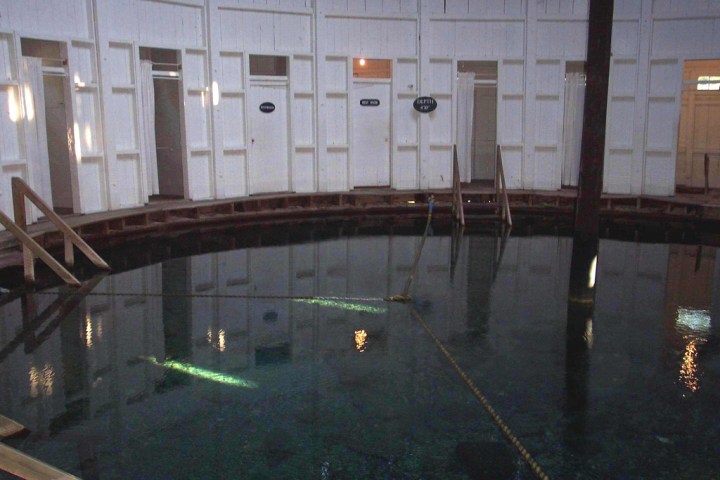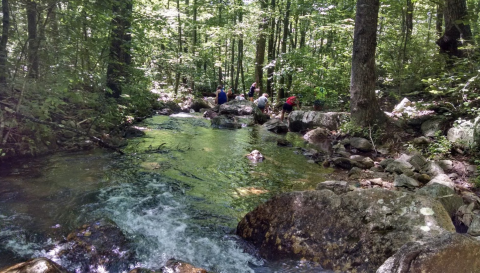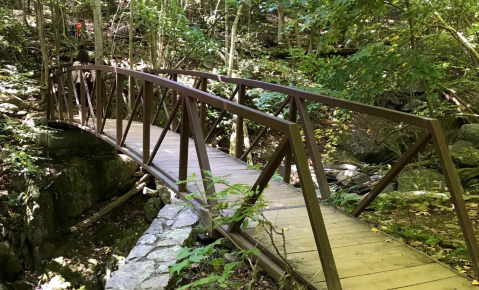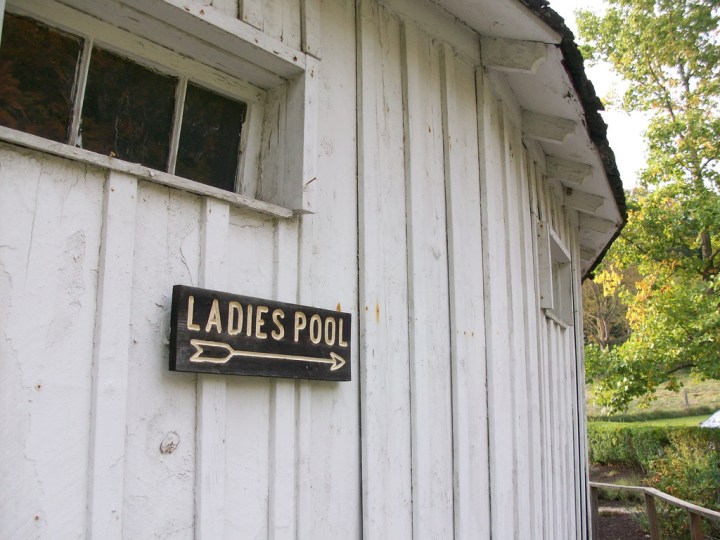There's No Better Place To Be Than These Hot Springs In Virginia
Editor’s Note: The hot springs are temporarily closed. Restoration, which is expected to take between 12 and 18 months, is set to begin during the summer of 2022.
The idea of hot springs in Virginia, especially one that carries with it legend and history, sounds pretty appealing.
The natural hot springs in Virginia, which are also called warm springs or “thermal” springs, are naturally occurring springs that maintain a temperature above that of their surroundings thanks to groundwater that has been geothermically heated by the earth’s crust before rising to the surface.
While hot springs can be found all over the world, Virginia is home to more than 100 of these natural hot tubs, some maintaining a temperature just above a lukewarm bath, with others exceeding 100 degrees Fahrenheit.
Historically, Virginia hot springs have been used as a source of healing and re-invigoration. Because of their high temperatures, minerals are more easily dissolved in the water, allowing for absorption and increased relaxation for those who choose to “take the waters.”
The most famous of the Virginia hot springs are located in Bath County in the small (and aptly-named) community of Warm Springs. Known as the Jefferson Pools, these natural springs in Virginia have summoned visitors to their healing waters for centuries.
Local legend has it that these hot springs in Virginia, which are formed from two springs starting in the nearby Allegheny Mountains, were discovered by a Native American brave in the 1600s. The brave was said to be traveling across the mountains to a sacred meeting ground still two days’ journey away when, exhausted, he stumbled upon the springs and fell into their healing waters. The soothing waters so invigorated him that he ran the remainder of the way to the meeting and arrived with such spirit that he was elected leader of his tribe.

In the 1700s, as European settlers and explorers began moving west into the area, they, too, discovered the natural springs in Virginia. By the 1740s, settlers had built small guest lodges near the pools, often soaking in the warm, mineral-laden waters as a way to ease weary muscles and soothe tired bodies.

With a total of seven hot springs located between the town of Hot Springs and Warm Springs, the area’s fame spread and soon a resort spa, the predecessor to today’s Omni Homestead Resort, grew as a way to accommodate the increase in visitors.
The first gentlemen’s bath house at Warm Springs was built in 1761. The structure still stands today, making it the oldest spa structure in the United States.
Although the pools were always popular, Thomas Jefferson went a long way in securing their place in history when he first visited in 1818. Suffering from what he called “rheumatism,” Jefferson had heard of the healing waters and sought their aid. Considering that he not only stayed for three weeks but took to the water three times a day during his stay, it can only be assumed that when he described the pools as being of “first merit,” he was being elegantly understated.
By 1836, as more people learned of the natural hot springs in Virginia, a separate women’s bathhouse was built, allowing for greater privacy amongst the sexes – and allowing for the swimsuit-optional rule which remains in effect today.
Originally called the Warm Springs Bathhouses, the pools were renamed after Jefferson in 1996 when Club Resorts purchased The Homestead Resort. Now owned and operated by the Omni chain of hotels, The Homestead still oversees the pools, which after more than 250 years, continue to offer relaxation with waters that remain a consistent 98 degrees Fahrenheit, regardless of the seasons.
With some of the clearest water in Virginia and a high mineral content that rivals many famed European hot springs, the pools provide health and healing to those who partake in their soothing comfort.
Listed to the Virginia Landmarks Register on November 11, 1968 and the National Register of Historic Places on October 8, 1969, the Jefferson Pools continue to reign supreme among all the natural hot springs in Virginia, offering a unique opportunity to, quite literally, share the same space and experience as historical figures like Jefferson, Robert E. Lee, Mary Lee, Stonewall Jackson, and many others.
For more information about these top-rated Virginia hot springs, check out Jefferson Pools website.
So, did you know about these famous natural springs in Virginia? Have you experienced the healing waters at the Jefferson Pools? If so, how was it? What are your favorite hot springs in Virginia? Tell us!
OnlyInYourState may earn compensation through affiliate links in this article. As an Amazon Associate, we earn from qualifying purchases.
More to Explore
Hot Springs In Virginia
What is the most scenic town in Virginia?
Hot springs in Virginia aren’t the only beautiful sites in the state. Virginia is brimming with beauty, and Sperryville is a great place to experience it. The small town is surrounded by natural beauty, thanks in part to its location in the foothills of the Blue Ridge Mountains. Dubbed a “gateway to adventure,” Sperryville is home to Shenandoah National Park and is just a short distance from Old Rag Mountain. In addition to natural beauty, Sperryville boasts a bustling downtown – complete with specialty shops, galleries, antique stores, and restaurants.
What are the oldest attractions in Virginia?
The state’s historic sites go far beyond the natural springs in Virginia. There are tons of historic places in Virginia, including the Red Fox Inn and Tavern in Middleburg. Established in 1728, it takes the title of the oldest restaurant in Virginia. Today, patrons are treated to one of the state’s most unique dining experiences, along with seasonal Virginia cuisine that’s sure to satisfy.
What are the best little known attractions in Virginia?
Hidden gems are abundant in Virginia. There’s so much to see and explore, including the Historic Polegreen Church. Work on the church began 1748 and was completed in 1764. Sadly, the church burned to the ground during the Civil War – all is not lost forever, though. In 1990, an “open-air interpretation” of the church was built, offering visitors a glimpse into the past and what once was. And this is just the tip of the iceberg when it comes to hidden gems in Virginia.









